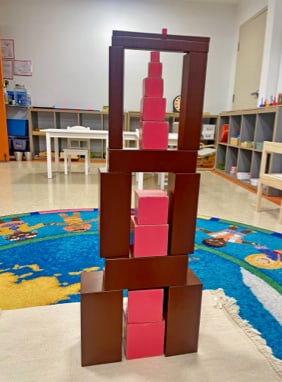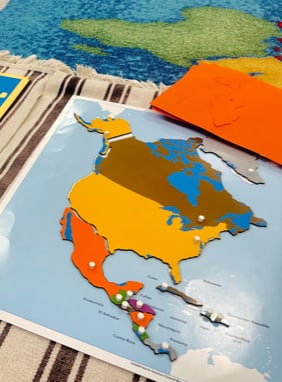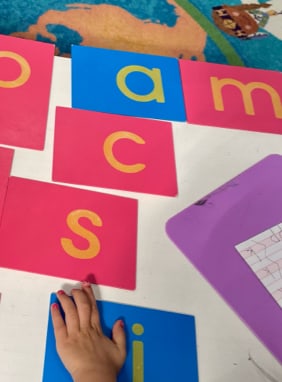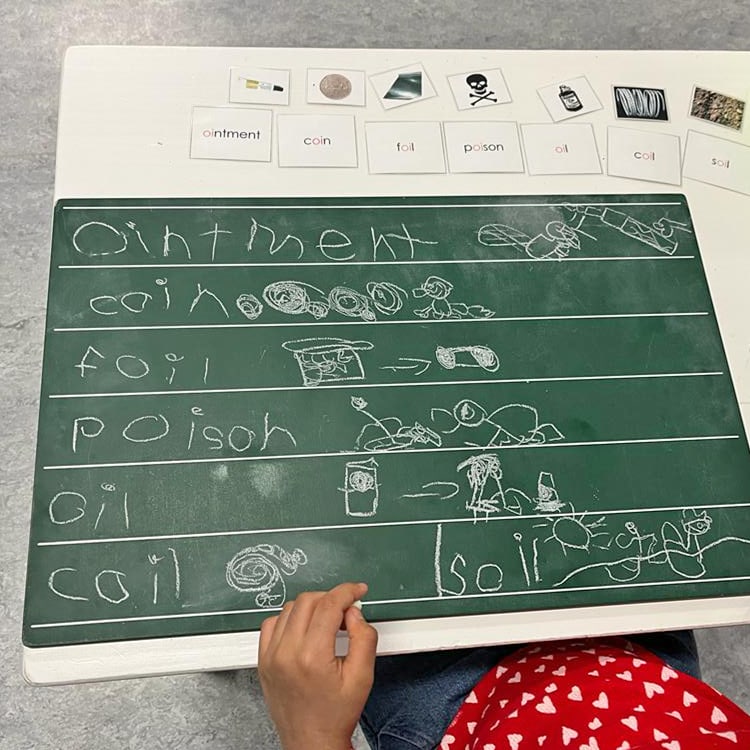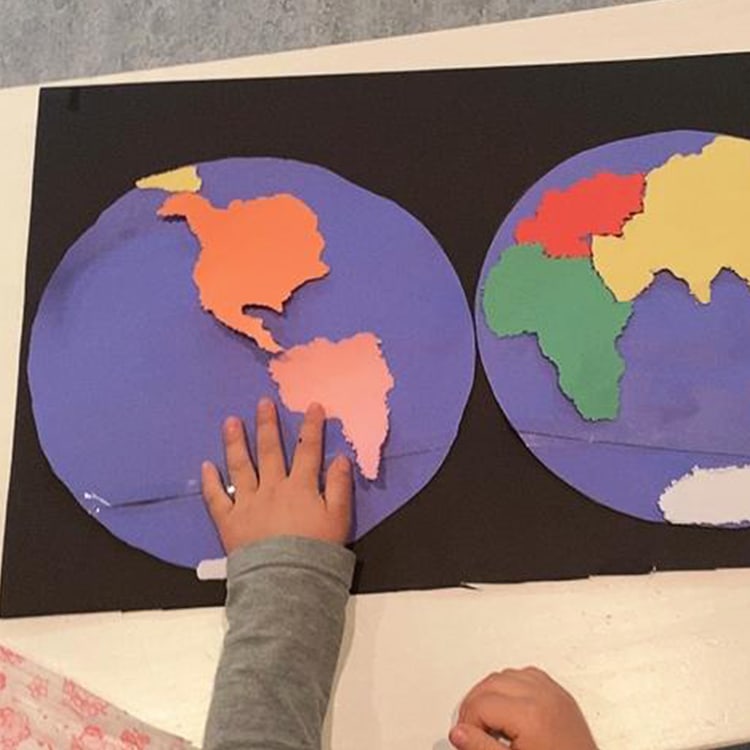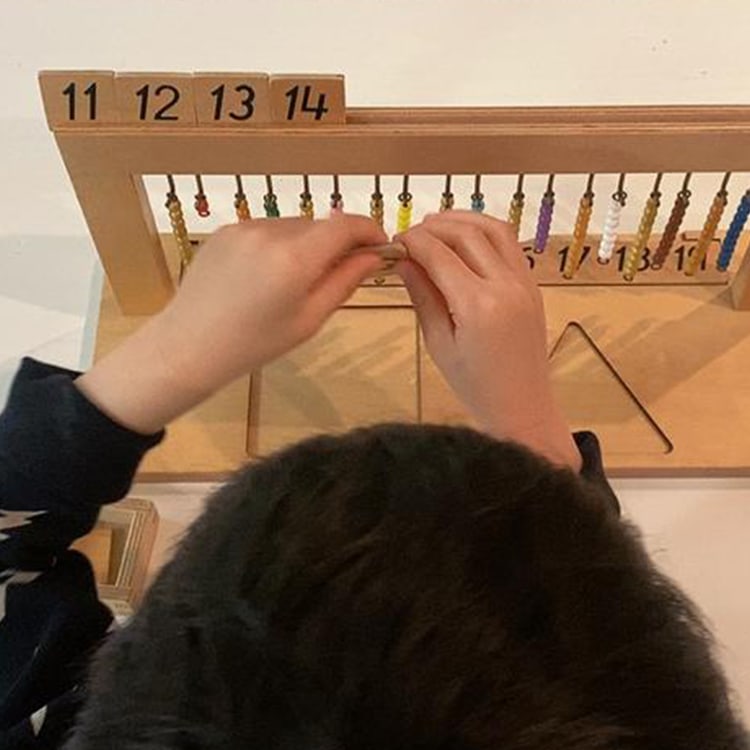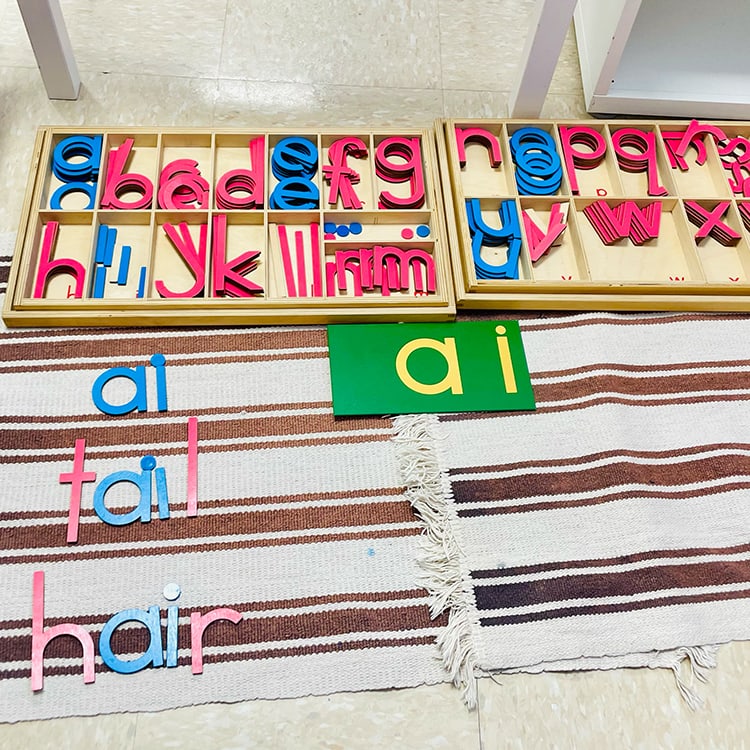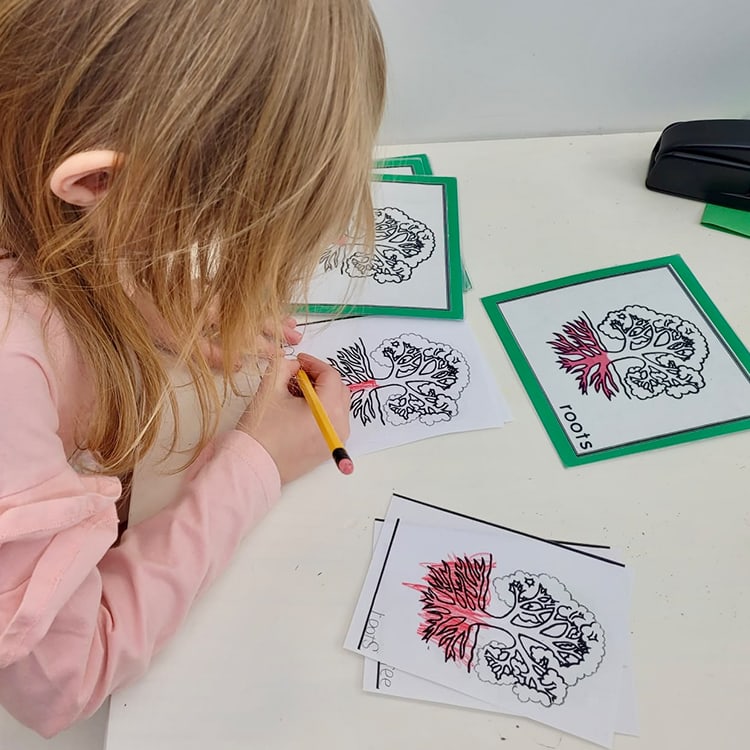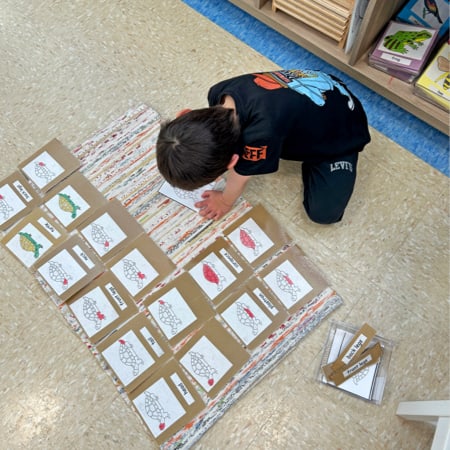The Montessori method of learning was created in 1907, by Dr. Maria Montessori. The Montessori approach provides children with tools and techniques to critically think about the world around them and provide a fundamental framework of learning. Montessori toys are geared towards helping a child learn and develop and are simple. These toys encourage children to learn and be engaged in what they can do with the toys rather than what the toys can do for them. Without the bells and whistles of passive entertainment, children can explore and expand their minds with montessori toys.
The Montessori method of learning was created in 1907, by Dr. Maria Montessori. The Montessori approach provides children with tools and techniques to critically think about the world around them and provide a fundamental framework of learning. Montessori toys are geared towards helping a child learn and develop and are simple to use. These toys encourage children to learn and be engaged in what they can do with the toys rather than what the toys can do for them. Without the bells and whistles of passive entertainment, children can explore and expand their minds with Montessori toys.
Montessori toys are an important part of the Montessori education method. By providing children with a hands-on, engaging learning environment, Montessori toys help children develop the skills and knowledge they need to succeed in school and in life.
What Makes a Montessori Toy Different?
The goal of Montessori toys is to help children develop various skills, including fine motor, cognitive, and social-emotional, in a natural and intuitive way. The characteristics that make a Montessori toy are made to guide the child to have critical thinking and engage with different parts of their mind to stimulate growth. The qualities of a Montessori toy are often seen throughout the common 6 characteristics.
Simple
Simplicity gives the child inspiration to let them create and imagine many ways in which they are able to use the toy.
Natural
Materials that are made of wood that are made safe for children to use and handle. This teaches about the natural world and are often more durable than many of the man made plastic toys which can be damaged easily
Attractive
Brightly coloured pieces help to stimulate the senses and draw the child in which makes them want to play and engage with the toys and hold their attention.
Sparse
There are not a lot of parts and extra pieces. What is part of the toy encourages the child to engage with the environment and think about the possibilities around them. There are also not a lot of toys around them and having lesser toys helps to keep focus and attention on that which is in front of them.
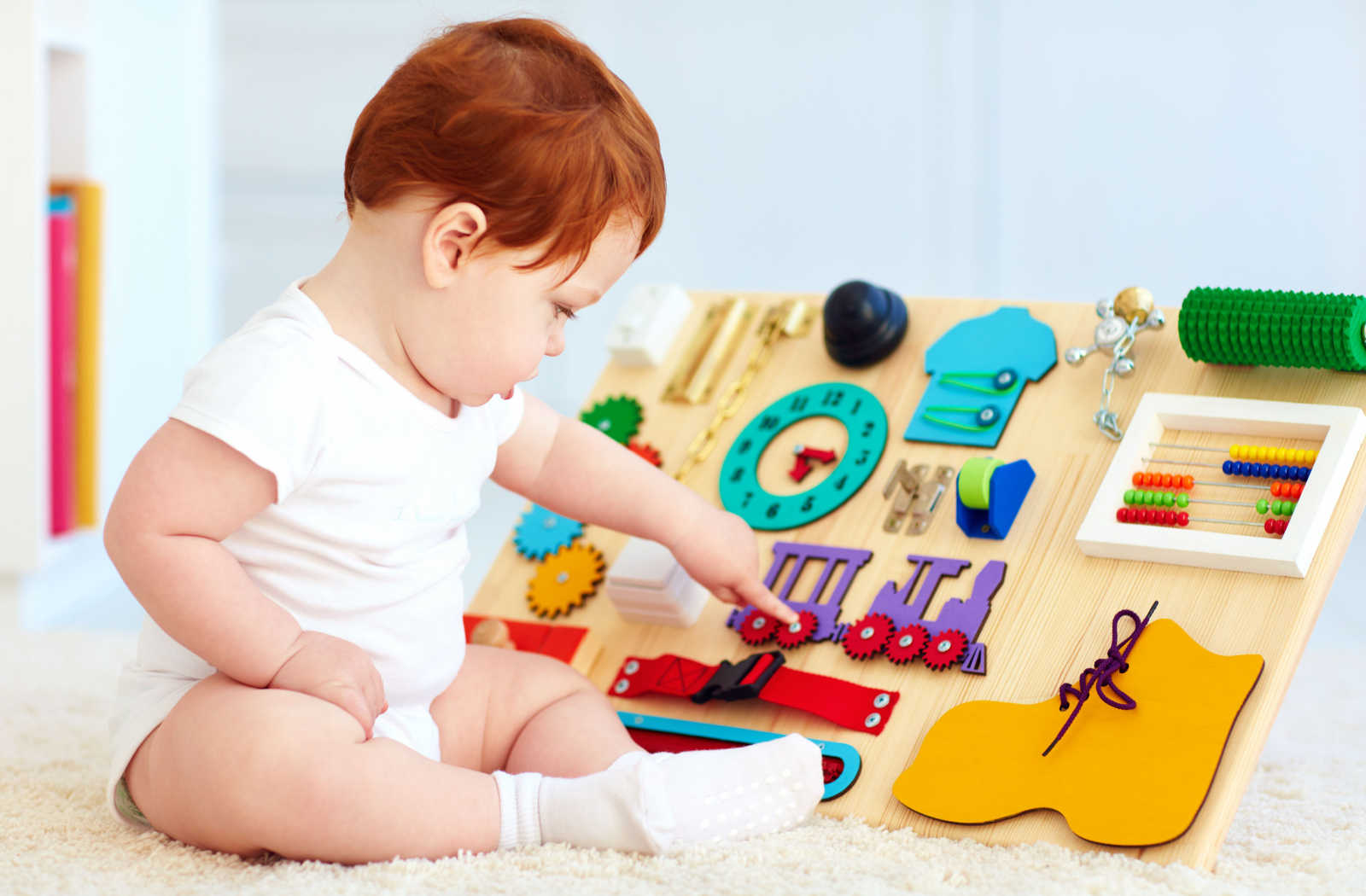
Practical
The toys are based in reality. This is not to say that it is not intended for the child to use their imagination, but rather to connect with the world around them to understand the environment that they are living in. The caregiver or teacher, will help to decide which toys are suitable for the child which will best stimulate their imagination.
Open Ended
There is always more than one way for the toy to be used. This will help to engage the child’s mind to see more than one possibility and engage with different areas of their creativity. These toys are not intended to have one specific use and can be used in many ways
One of the key characteristics of Montessori toys is that they are made of natural materials. This is because Montessori education places a strong emphasis on the environment and how it affects a child’s development. Montessori toys are often made of wood, glass, or metal, and are intended to be durable and safe for children to use.
How do Toys Help with Learning?
Children, from an early age, are engaging with their environment in various ways. They are experiencing the world around them and learning on different planes of development. Between the ages of 0 to 6 years old, children are taking everything in around them and learning how to interact with their environment. During this time in their development, children are sensitive to textures and materials around them. By giving them toys, activities and materials that can support self-directed discovery, can help them to create foundations for learning.
How Can My Child Engage with Montessori Toys?
Montessori education is based on fundamentals that teach children to learn and understand their surroundings. As a parent or caregiver, the toys that are used and chosen to help aid in the child’s growth are done so with great care. These toys will help to enrich the child’s mind and based on their individual needs and abilities, the educator will help the child find the right toys for their level. These toys are introduced in a unique and exciting way in a prepared environment. The time spent using toys is structured with goals in mind which the educator will have in place to help the child learn and grow while they are using the toys that have been given to them.
Are Montessori Toys Right for My Child?
When using the Montessori method for your child, it is important to understand the differences between how this method is different from traditional. Often many early childhood preschools are meant to have play time as learning time. Rather than having the child open and unstructured, Mosaic Montessori Academy has rewarding experiences to set up your child for a life time of learning. Learn more about our methods with an in person tour. Book your appointment today to see how the Mosaic Montessori Academy can help your child learn and grow.
Montessori toys are an important part of the Montessori education method. By providing children with a hands-on, engaging learning environment, Montessori toys help children develop the skills and knowledge they need to succeed in school and in life.
What Makes a Montessori Toy Different?
The goal of Montessori toys is to help children develop various skills, including fine motor, cognitive, and social-emotional, in a natural and intuitive way. The characteristics that make a montessori toy are made to guide the child to have critical thinking and engage with different parts of their mind to stimulate growth. The qualities of a Montessori toy are often seen throughout the common 6 characteristics.
Simple
Simplicity gives the child inspiration to let them create and imagine many ways in which they are able to use the toy.
Natural
Materials that are made of wood that are made safe for children to use and handle. This teaches about the natural world and are often more durable than many of the man made plastic toys which can be damaged easily
Attractive
Brightly coloured pieces help to stimulate the senses and draw the child in which makes them want to play and engage with the toys and hold their attention.
Sparse
There are not a lot of parts and extra pieces. What is part of the toy encourages the child to engage with the environment and think about the possibilities around them. There are also not a lot of toys around them and having lesser toys helps to keep focus and attention on that which is in front of them.
Practical
The toys are based in reality. This is not to say that it is not intended for the child to use their imagination, but rather to connect with the world around them to understand the environment that they are living in. The caregiver or teacher, will help to decide which toys are suitable for the child which will best stimulate their imagination.
Open Ended
There is always more than one way for the toy to be used. This will help to engage the child’s mind to see more than one possibility and engage with different areas of their creativity. These toys are not intended to have one specific use and can be used in many ways
One of the key characteristics of Montessori toys is that they are made of natural materials. This is because Montessori education places a strong emphasis on the environment and how it affects a child’s development. Montessori toys are often made of wood, glass, or metal, and are intended to be durable and safe for children to use.
How do Toys Help with Learning?
Children, from an early age, are engaging with their environment in various ways. They are experiencing the world around them and learning on different planes of development. Between the ages of 0 to 6 years old, children are taking everything in around them and learning how to interact with their environment. During this time in their development, children are sensitive to textures and materials around them. By giving them toys, activities and materials that can support self-directed discovery, can help them to create foundations for learning.
How Can My Child Engage with Montessori Toys?
Montessori education is based on fundamentals that teach children to learn and understand their surroundings. As a parent or caregiver, the toys that are used and chosen to help aid in the child’s growth are done so with great care. These toys will help to enrich the child’s mind and based on their individual needs and abilities, the educator will help the child find the right toys for their level. These toys are introduced in a unique and exciting way in a prepared environment. The time spent using toys is structured with goals on mind which the educator will have in place to help the child learn and grow while they are using the toys that have been given to them.
Are Montessori Toys Right for My Child?
When using the Montessori method for your child, it is important to understand the differences between how this method is different from traditional. Often many early childhood preschools are meant to have play time as learning time. Rather than having the child open and unstructured, Mosaic Montessori Academy has rewarding experiences to set up your child for a life time of learning.
Learn more about our methods with an in person tour. Book your appointment today to see how the Mosaic Montessori Academy can help your child learn and grow.








